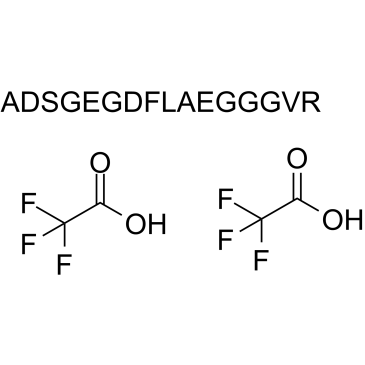61533-47-9
| Name | Fibrinopeptide A, human TFA |
|---|
| Description | Fibrinopeptide A, human TFA is a 16-residue short polypeptide cleaved from fibrinogen by thrombin. Fibrinopeptide A, human locates at the NH2-termini of the Aα chain[1]. |
|---|---|
| Related Catalog | |
| In Vitro | The conversion of monomeric fibrinogen into polymeric fibrin is mediated by thrombin, which binds to the central region of fibrinogen and catalyzes cleavage of the 2 short peptides, the 16-residue fibrinopeptide A (FpA) and the 14-residue fibrinopeptide B (FpB), located at the NH2-termini of the Aα and Bβ chains, respectively[1]. |
| In Vivo | Fibrinopeptide A (FPA) is a small polypeptide cleaved from fibrinogen by thrombin, has a short half-life, and is considered a sensitive biochemical marker of thrombin activity, fibrin generation, and ongoing thrombosis[2]. |
| References |
| Molecular Formula | C67H99F6N19O30 |
|---|---|
| Molecular Weight | 1764.62 |
